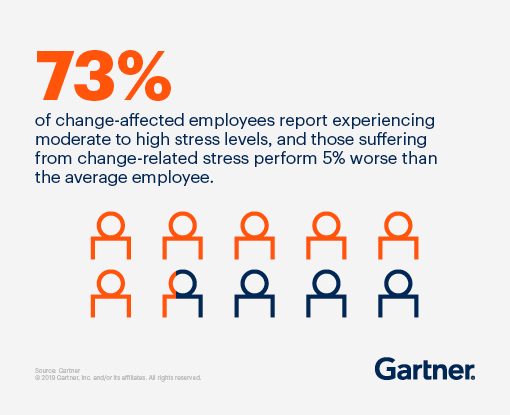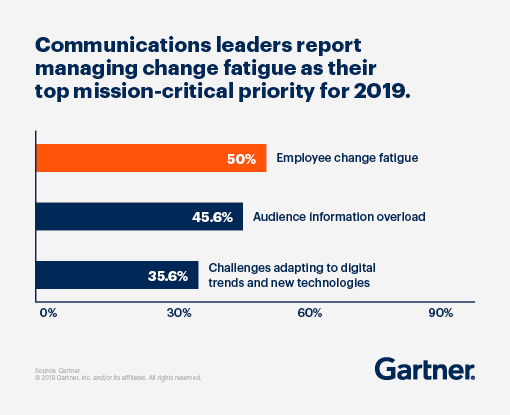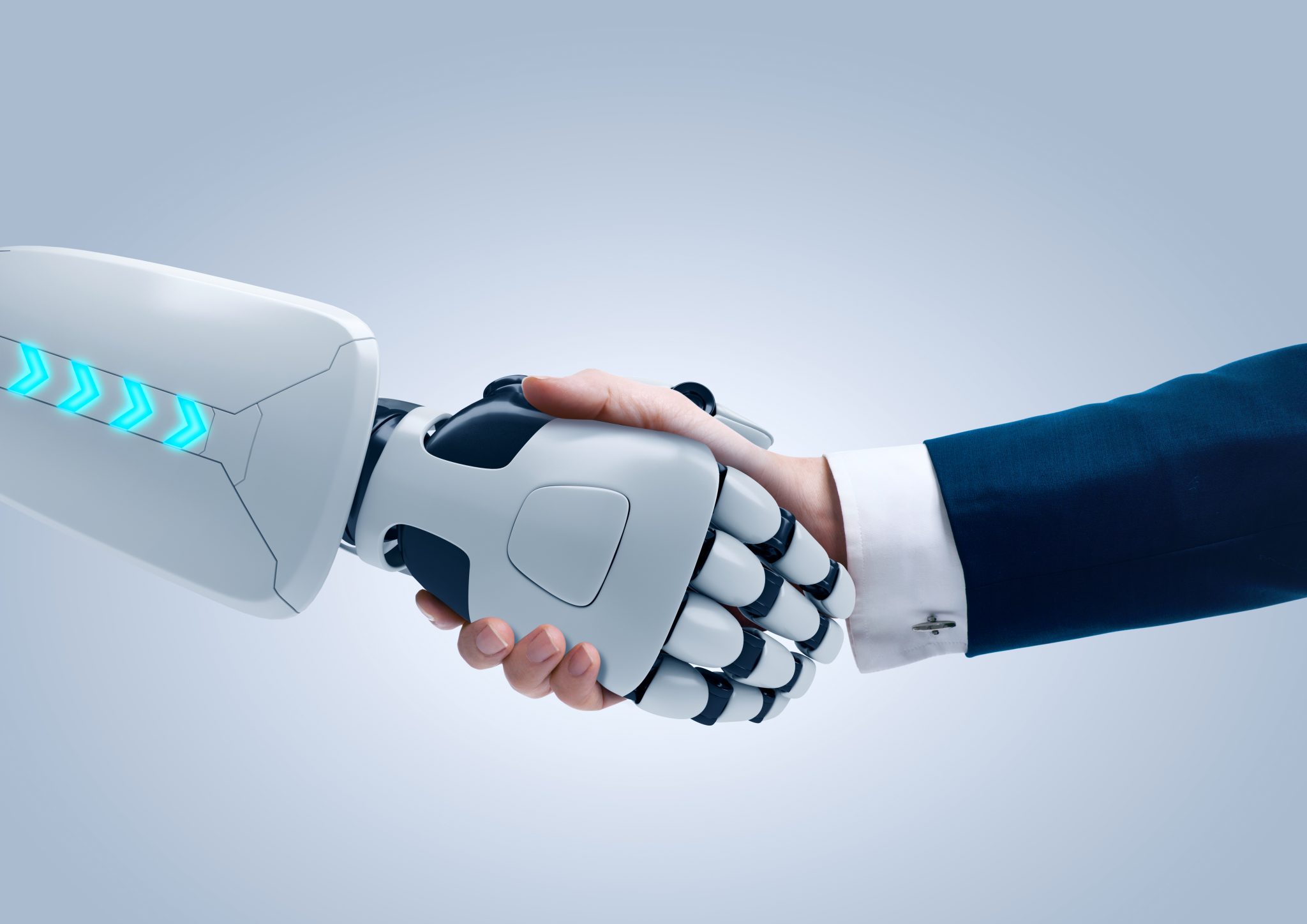In a previous article, we explored how RPA can be used to create a new reality for organizations that are looking to implement remote work options in the long run. Not only did we focus on the impact of RPA on business continuity and resilience, but we also talked about how it can help transform the way teams work together.
But before teams can enjoy the benefits of an RPA implementation project, conflict between robots and humans can arise. Driven by employee resistance, this takes place when change management isn’t properly implemented.
In this article, we will discuss how to manage the changes and achieve proper alignment between and among people, process, and technology brought about by digital transformation projects.
Why projects fail
According to a survey from McKinsey, about 70% of transformation programs fail, largely due to employee resistance and lack of management support. Even Fortune 1000 companies see this as a familiar territory. BBC, Ford, GE, and P&G are some of the high-profile names that experienced digital transformation failures.
Even worse, leading practitioners of radical corporate engineering say that the success rate can be as low as 1 out of 5, according to another report.
What makes people critical
But people get impacted the most.
They face the unfamiliar situation, experience immediate to long-term anxiety brought by possible job displacement, role changes, or fear being irrelevant.
Source: HR Daily Advisor
And employee anxiety has impact on work productivity.
Employees who are worried, fearful, and feel that the office is no longer a safe space for them experience a high level of stress hormone known as cortisol. Elevated levels of cortisol interfere with learning, memory, and collaborative work, shut down our creativity, and impact inspiration and innovation. All of these result to lower employee engagement and eventually impact productivity, as affected employees focus on survival (fight-or-flight mechanism).
And out of the three, it is the people that remain constant. Technology gets upgraded, new features are added, more efficient processes are created, and what remains behind these technologies and working along these processes are the people.
This is why they are a critical factor for any technology transformation projects to be successful.
So what do people need?
What is change management
Change management is the discipline of preparing, supporting, and guiding individuals to a change vision, which essentially is the future desired state of the organization.
Joselle Varela, a business analyst and digital transformation consultant, stresses the importance of change management.
”It’s about talking to your stakeholders. Understand what their priorities are, and what their fears are for you to effectively implement a digital solution. Technology innovation programs affect people, so you have to know what they REALLY have in mind.
Joselle VarelaDigital Transformation Consultant
In change management, we have to be very clear in what we want to achieve, what we want to change in the org, and where we want to go.
So how can you help employees remain engaged to remain fully committed from the organization’s current state leading up to its desired state?


The key is in communicating and creating stakeholder buy-in.
When communicating with employees, it is important to give them space to express their concerns as this shines a light on the cause/s of stress and allows you to capture the resistance as soon as possible.
And there are three important components to highlight during any in-person communication: (a) the change vision; (b) how the digital transformation project could impact the employees; and (c) programs to support, and educate employees on the capabilities, limitations, and implementation process of the technology.
The Human-Robot Team Canvas
So how can employees trust that the change vision will not be detrimental to them? One way is to provide opportunities for them to participate in the change design process.
Since a lot of digital transformation projects involve automation of some sort today, here we look at a canvas created by the Design Thinking Playbook to help us envision what the new experience would look like.
The Human-Robot Team Canvas aims to shape the relationship and experience (process) between the human (people) and robot (technology).
According to Lewrick and Leifer, “Interaction and experience between the robot and person are the crucial issues. For one, information is exchanged between the two. This exchange is relatively easy because certain actions are usually performed 1:1.”
“Things become more complex when emotions form an integral part of the interaction. Emotions must be interpreted and put in the right context.”
“Only a sophisticated interplay between these components can properly assess intentions and meet expectations. That complex systems require complex solutions is especially applicable in this environment. The complexity is stepped up a notch in the human-robot relationship.”
By answering the questions from the human-robot canvas, we will be able to define and delineate roles, anticipate the interaction and conflict between humans and robots, and offer a meaningful experience to employees.
From delineation to collaboration
“Can the robots really do my job?” and “The robots are going to take our jobs” are common concerns raised whenever an automation project is discussed.
What the human-robot team canvas brings to the fore is the idea that both humans and robots have their own respective strengths and when combined, can deliver an improved work experience for the humans.
For example, when answering the question “which experience makes the person happy” or “which task does the robot meet,” this can be an opportunity to do an audit of all the business processes and identify the manual and repetitive tasks that humans do, which to some employees, are a very disengaging type of work.
”If employees understand the process that are to be automated, the robots to be implemented, and the tasks that they will handle, chances are, the initial fear and mistrust will be alleviated.
James Redmond ChuaRPA Lecturer, Nagaoka University of Technology
Moreover, the tasks that are overwhelming because they take time to execute, have layers of processes, occur with the greatest frequency, or are duplicated across functions can be discussed. Because these can be seen as symptoms of a problem, employees, along with business analyst and technology specialists, can discuss if these are tasks that the robots can meet.
If employees understand the process that are to be automated, the robots to be implemented, and the tasks that they will handle, chances are, the initial fear and mistrust will be alleviated. If leaders and managers communicate that the robots are designed to make the job more interesting, chances are, employees will be more cooperative.
Source: Fintech Futures
The future of work
Forward-looking organizations realize that the future of work will be about processes run by technology and supported by people (versus business processes executed by people and supported by technology as was the case in the past).
The new experience is for humans to work alongside robots that can amplify and augment the human strengths. Robots can meet the manual, repetitive, and other hand-coded tasks and knowledge, but they have not yet caught up when it comes to creative thinking, critical thinking, brainstorming, and empathy.
”Creativity is arguably the most difficult human faculty to automate: robots are unlikely to be fully creative anytime soon.
Michael OsborneUniversity of Oxford
This is supported by Michael Osborne, an associate professor from the University of Oxford, who believes that “creativity is arguably the most difficult human faculty to automate: robots are unlikely to be fully creative anytime soon.” Robots are also limited when it comes to judgment calls, and business processes still have activities that have different handling procedures – tasks that are not ideal for automation.
Back to the canvas, when are robots and humans strongest as a team?














